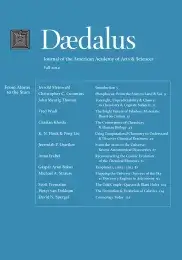Exoplanets, 2003–2013
Cosmologists and philosophers had long suspected that our sun was a star, and that just like the sun, other stars were also orbited by planets. These and similar ideas led to Giordano Bruno being burned at the stake by the Roman Inquisition in 1600. It was not until 1989, however, that the first exoplanet – a planet outside the solar system – was discovered. While the rate of subsequent discoveries was slow, most of these were important milestones in the research on extrasolar planets, such as finding planets around a pulsar (a compact remnant of a collapsed star) and finding Jupiter-mass planets circling their stars on extremely short period orbits (in less than a few Earth-days). But the first decade of our millennium witnessed an explosion in the number of discovered exoplanets. To date, there are close to one thousand confirmed and three thousand candidate exoplanets. We now know that a large fraction of stars have planets, and that these planets show an enormous diversity, with masses ranging from that of the moon (1/100 that of Earth, or 0.01M⊕) to twenty-five times that of Jupiter (25MJ, or approximately 10,000M⊕); orbital periods from less than a day to many years; orbits from circular to wildly eccentric (ellipses with an “eccentricity” parameter of 0.97, corresponding to an aspect ratio of 1:4); and mean densities from 0.1g cm−3 (1/10 of water) to well over 25g cm−3. Some of these planets orbit their stars in the same direction as the star spins, some orbit in the opposite direction or pass over the stellar poles. Observations have been immensely useful in constraining theories of planetary astrophysics, including with regard to the formation and evolution of planets. In this essay, I summarize some of the key results.
Several processes have been used to discover exoplanets, but the majority have been found by one of the following four observational methods: 1) radial velocity (RV) variations of the host star; 2) brightness variations due to the transit of the planet in front of its host star(s); 3) brightness fluctuations of a background source caused by the gravitational field of the planet (called microlensing); and 4) direct imaging of the planet.1
The RV method measures the periodic change in the line-of-sight (radial) velocity of the host star, due to the gravitational pull of the planet as it revolves around the star. In other words, the star circles around the center of mass of the star-planet system because of the planet’s pull, and we observe the line-of-sight component of this motion. The change in the RV of the star is measured by observing the . . .
